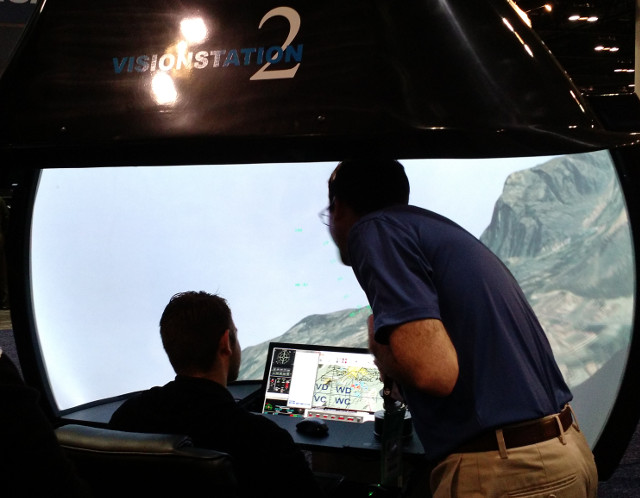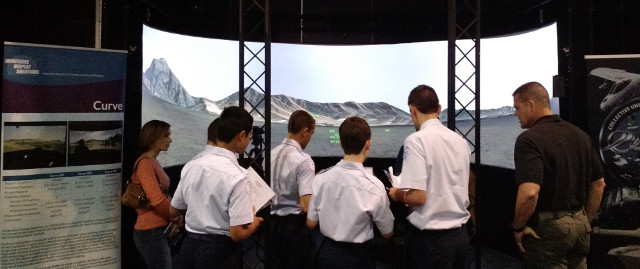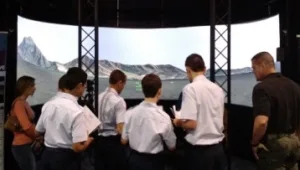The training of Joint Terminal Attack Controllers, JTACs, is a major initiative in the US military as well as other allied militaries. JTACs coordinate close air support and are vital for making sure bombs are dropped on enemy combatants and not civilians or friendly forces. Therefore, high level training is needed.
As noted in the Barco article (Barco Focuses on Projection at I/ITSEC 2015), Immersive Display Solutions is working with Barco on a number of U.S.-based immersive dome solutions, which are part of the JTAC training. But the full solution includes a desktop mini-dome solution (VisionStation2 photo) and an after-action review station. Immersive Display Solutions has now received a major contract (of the order of $10M) to deliver this solution, called Joint Fires, to the UAE.
This contract was won by putting together a “Strategic Alliance for Excellence” team consisting of Immersive Display Solutions (immersive dome solutions), MetaVR (VRSG database), Battlespace Simulations (MACE database), QuantaDyn (Air National Guard Advanced JTAC Training System (AAJTS) integrator) and Meggitt Training Systems (live fire and virtual weapons).

In the booth, CEO George Forbes told us that the UAE order is a really big win for them as they are still a small company. He did not say which projection solution is part of the order, but he pointed to the Sony demo they had running, next to one with another projector. The high contrast of the Sony solution was obvious from some distance away. Forbes noted that this is possible because the projector has a lot of lumens and that means they can use a 0.6 gain screen, which minimizes cross illumination on a curved screen, degrading contrast (photo). The IR capabilities of the projector are also really important for NVG training.

We then asked Forbes what he thought was the biggest trend in the training and simulation market. His answer: collaboration. By this he meant that the complexity of training and simulation solutions is becoming too big even for big companies. Such companies may not have all the technology in-house to propose a solution, so they have to develop it. That’s expensive and risky if they don’t get the contract.
Alternatively, he sees smart collaboration as a more cost effective and less risky way to compete on major contracts. “By putting together teams of the best-in-class service providers, I can compete with larger companies and offer a more proven and superior solution at lower cost,” explained Forbes. The approach seems to be working for him.

